With 11 wins, 10 draws and 13 defeats, Borussia Mönchengladbach ranked 10th in the Bundesliga and had failed by seven points in their European objective. As a result, Mönchengladbach’s board fired their head coach, Daniel Farke, at the end of the season and appointed the Swiss, Gerardo Seoane, who has two years of experience as a manager in the Bundesliga.
Difficulties in making the midfield-attack link in their build-up or even the lack of aggressiveness without possession were some of the German club’s collective handicaps. Besides that, the departure of some big names like Marcus Thuram, Lars Stindl, Yann Sommer (signed with Bayern Munich in January) and Ramy Bensebaïni (signed with Borussia Dortmund towards the end of the season) put Mönchengladbach’s future objectives in danger.
In this tactical analysis, we’ll first go after the reasons for Borussia M’gladbach’s insufficient season under Daniel Farke. Then, through our analysis, we’ll try not only to unmask where and how Gerardo Seoane can add value to this team, but also speculate which areas Borussia Mönchengladbach should recruit this summer.
Preferred formation
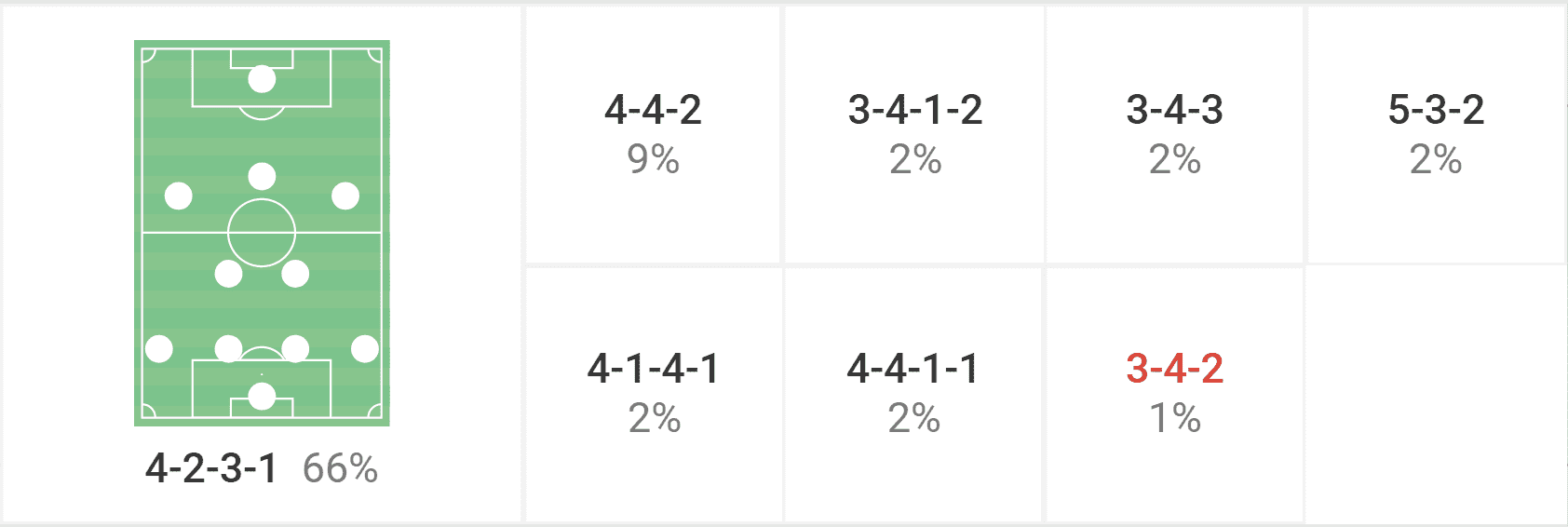
It is important to say that, under Daniel Farke, Mönchengladbach and teams led by Gerardo Seoane played in an identical formation both offensively and defensively.
In the next season and as we can see in the image above, M’Gladbach under Seoane should expect a 4-2-3-1 as a usual formation while in possession, with the fullbacks having a special importance in their offensive tactics. Yet, the Swiss coach, when managing Bayer Leverkusen earlier this season, in possession built up in a three-man backline, but unfortunately, this alternative did not end up the way he wanted.
Out of possession in the 2022/23 season, the German collective defended in a 4-4-1-1 which turns into a 4-4-2 when the offensive midfielder presses one of the centre-backs. In the first few minutes of the game, they pressed in a high and intense block, yet, over the game course M’gladbach usually decreased their pressing rate and the other team built up more easily.
Let’s now try to understand what went wrong for the German collective not achieving their goals this season.
Main weaknesses under Daniel Farke
One of Mönchengladbach’s biggest flaws last season under the former Norwich City manager was related to their behaviour out-possession, especially while pressing, where they lack aggressiveness and intensity during this moment of the game.
For instance, according to Wyscout, M’gladbach on average committed only 9,6 fouls per game when the league average is 13,26. Besides that, they are also below the Bundesliga average on both yellow and red cards. Even though these indicators do not fully explain the team’s lack of intensity during pressing, they can exemplify their aggressiveness absence.
This kind of attitude could have happened due to the type of players that intervened in that process, where most of them weren’t endowed with pace and explosion. For instance, Stindl, Kramer, Weigl and even Hofmann aren’t that physically intense for a successful, intense and high-block pressing plan.
Lack of intensity, especially in attackers, whenever the intention is pressing high usually leads to a successful build-up from the opposition. This fits the different game phases, as we’re going to see in the following images.
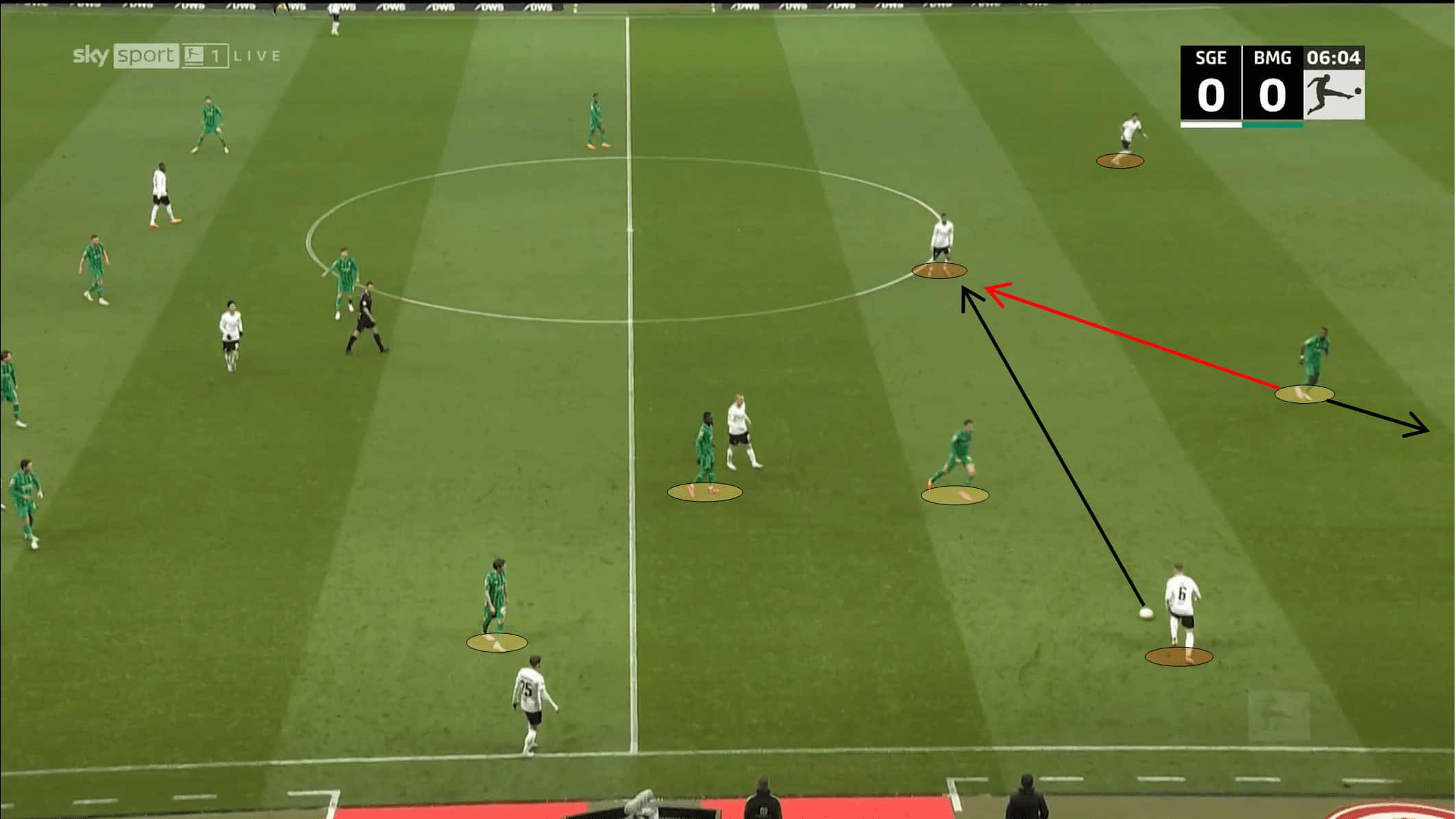
To illustrate how the toughness at the loss of possession moment is directly related to the other team’s success in breaking lines, we invite you to take a look at the following sequence of images.
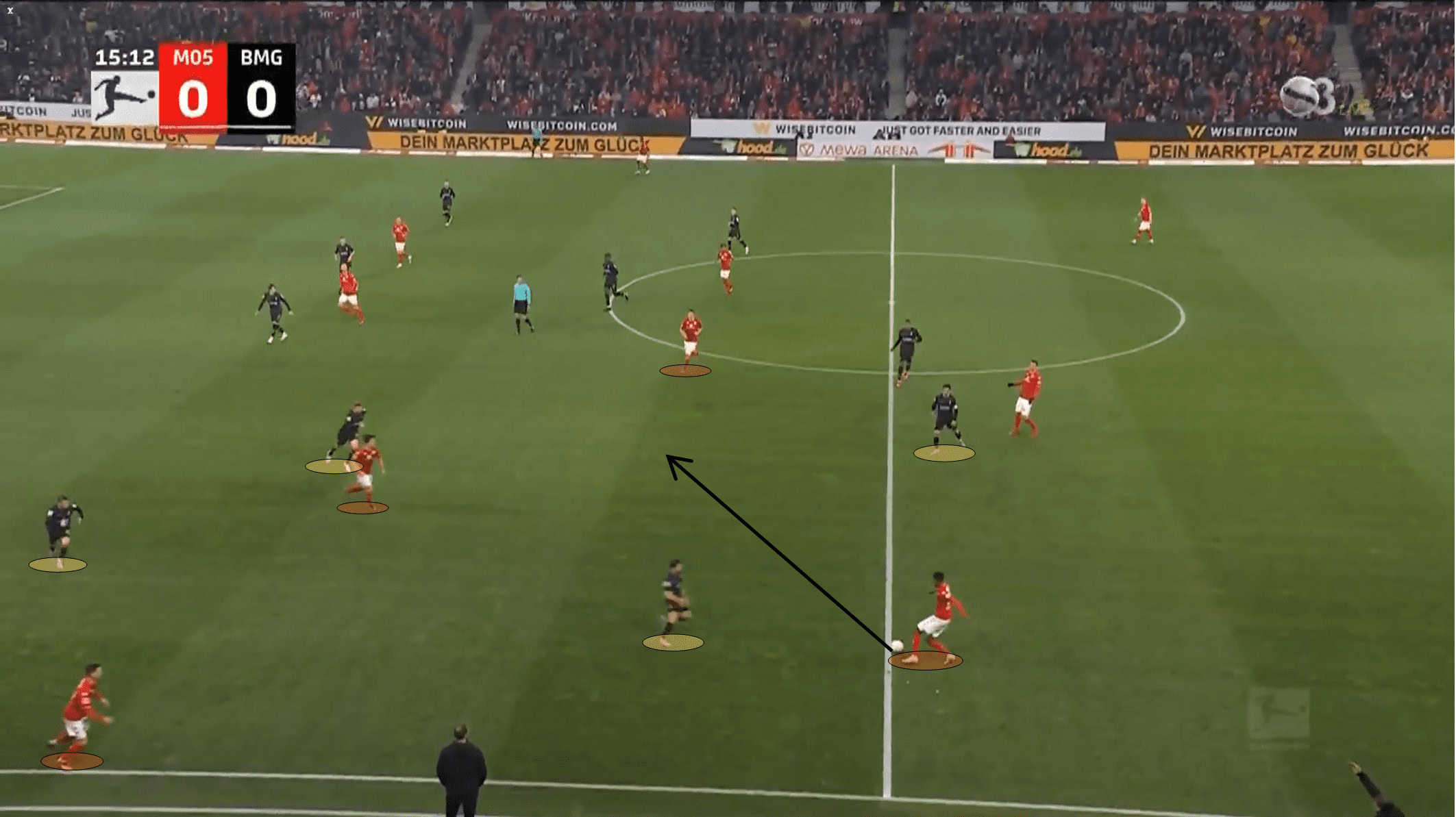
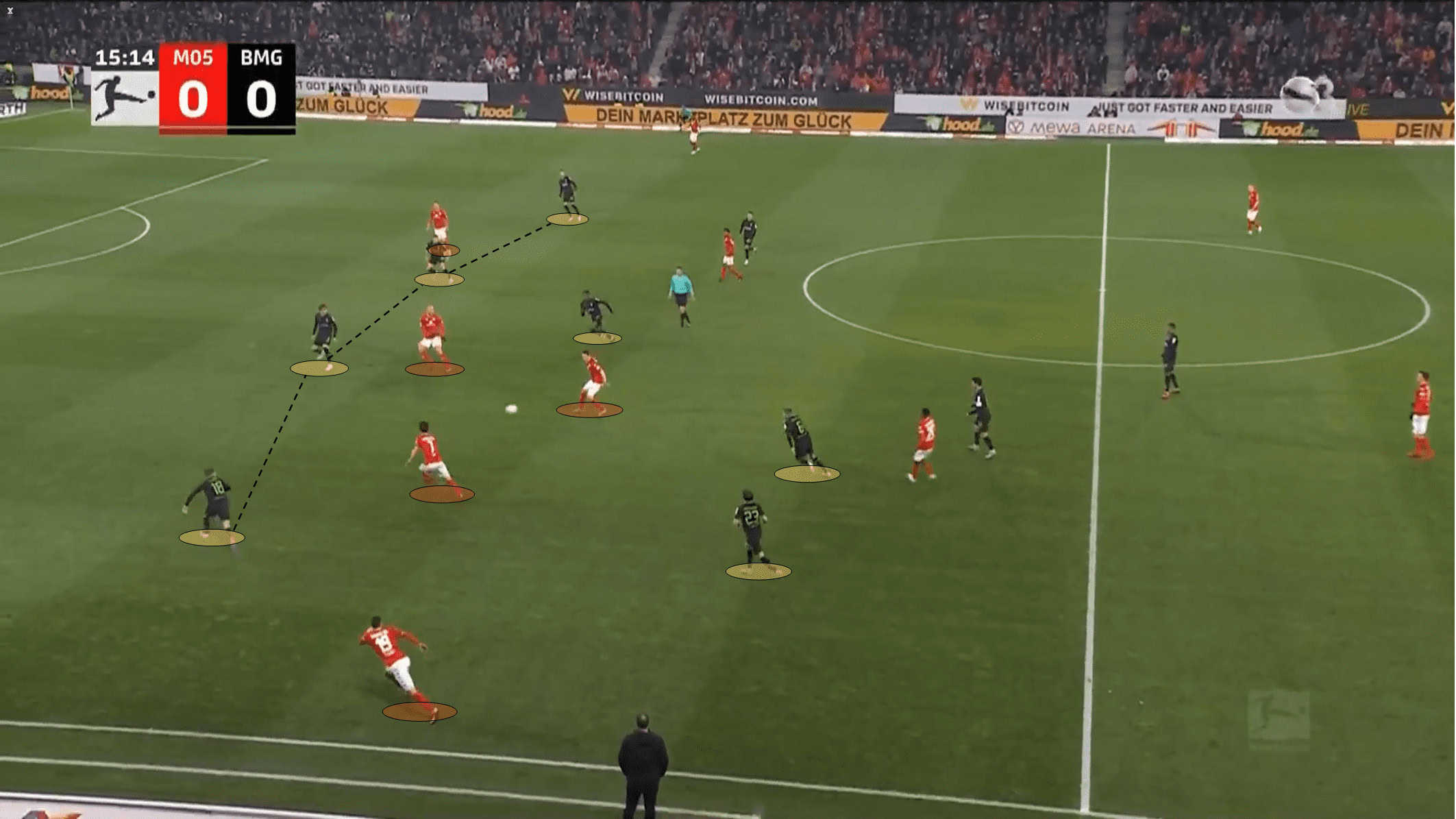
Defensive transitions also played a severe role in M’Gladbach’s less positive season and it can be explained by two components, tactical and physical. In fact, this feature is not only interrelated with the previous issue but also with some more that we going to explore further.
Firstly, in possession, Farke’s team were accustomed to using the full width and deepness of the pitch in order to create more space to play inside the opponents’ lines. Although, due to his tactical benefits, it was wise from the German to use this kind of approach. It is important to remember that this has a high transition risk associated with it.
As a matter of fact, playing with a team that uses the maximum width of the pitch can lead to dangerous counterattacks from the opposition whenever the attacking team loses the ball in dangerous zones of the pitch. This happens due to the massive free space in interior zones and due to the distance between the defenders whenever they lose the ball.
Using Wyscout, it was possible to understand that Borussia M’gladbach was above league average in losses of possession: approx. 102 losses per game against 97. Besides that, the data that supports our analysis the most is the one that shows that Mönchengladbach is also above league average in losing the ball in low zones of the pitch: approx. 22 losses per game against 16.
The most likely reason why several teams choose to play more closely when they are in possession is precisely this concern of losing the ball in a compromising zone of the pitch. In other words, they are aware of the limitations of their squad.
Although Borussia Mönchengladbach is currently ranked sixth-best for squad value in the league, they need better players to build up successfully, especially defenders. Yann Sommer, who is known for his outstanding technical qualities with the ball in his feet, left the club in January and the current successor seemed to have a few more difficulties than him during the offensive process.
In the below image, we can see an example of how the German collective loses the ball in crucial zones of the pitch and how it generates dangerous counterattacks for the opposition. In this case, the counterattack ended in a goal suffered by M’gladbach.
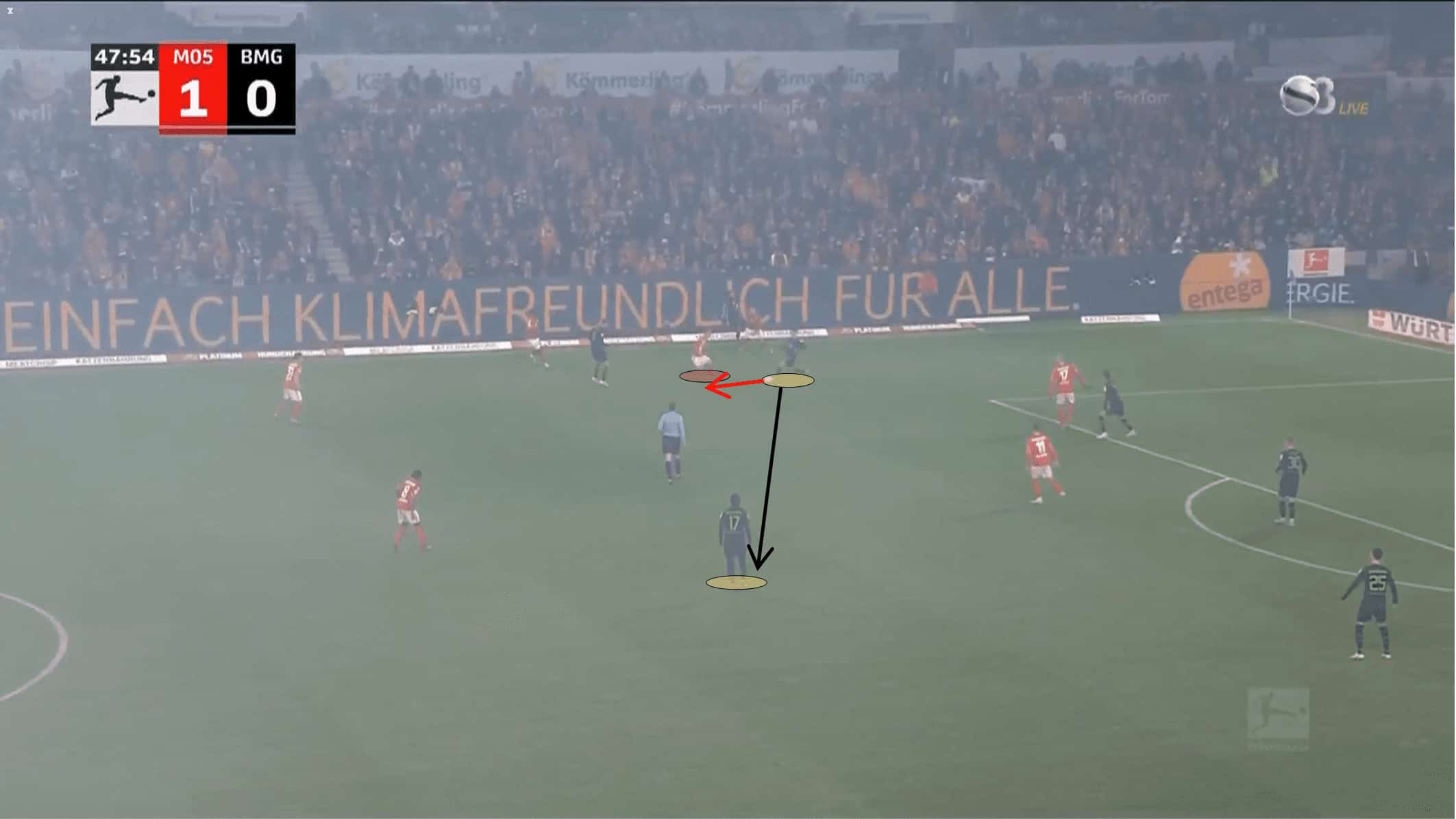

Physically, as we previously mentioned, they seem to possess players who struggle in situations of counterattack and are often quite leggy. For instance, maybe if Kramer was faster then he would have higher odds to prevent a numerical inferiority situation.
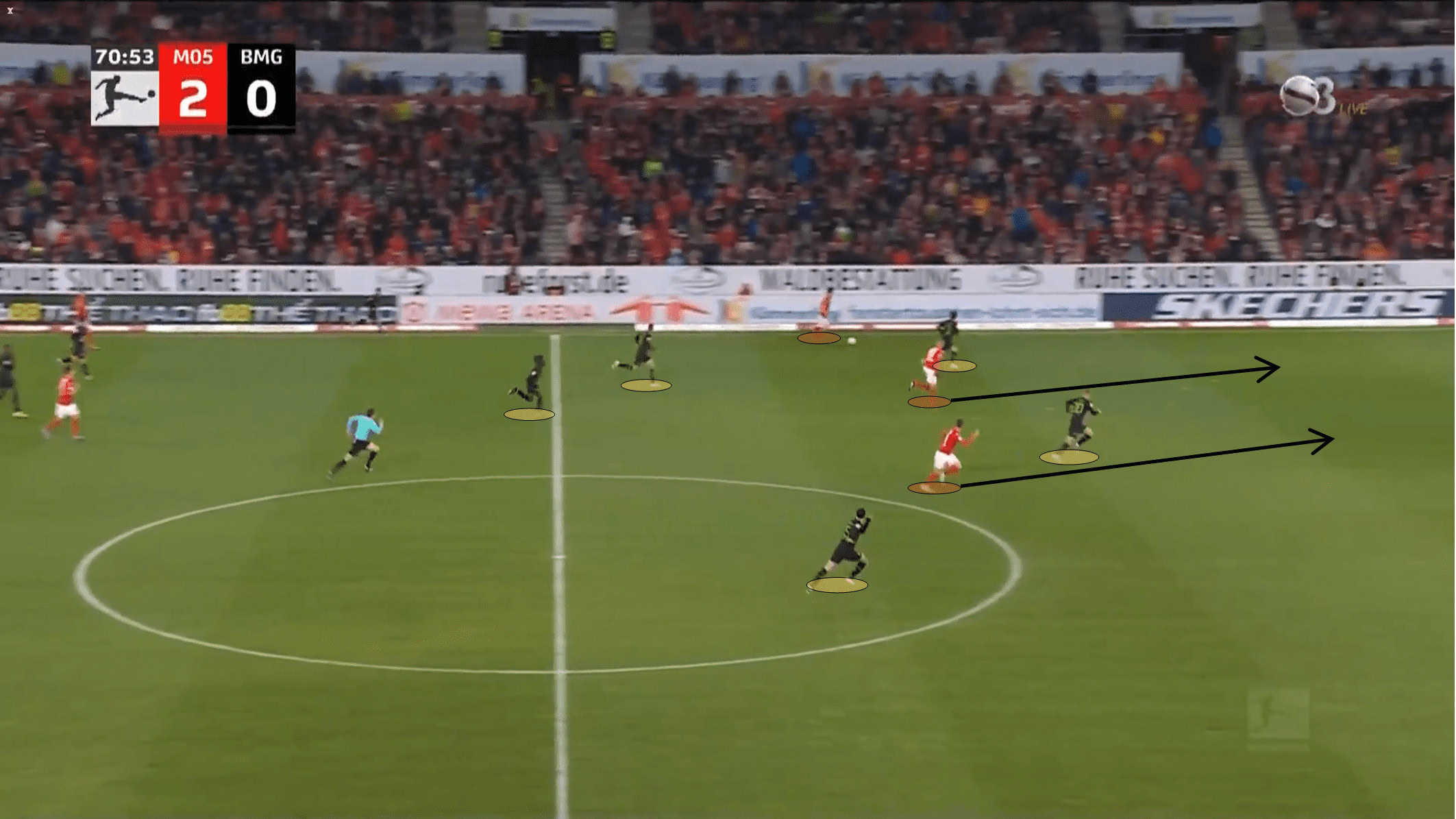
Where Gerardo Seoane can add value
The 44-year-old Swiss manager has a possession philosophy where he likes to hurt the opposition by the flanks, as is displayed in the following image. Besides that, resorting again to Wyscout it was possible to confirm that tendency where approximately 36% of the passes made during the game were lateral.
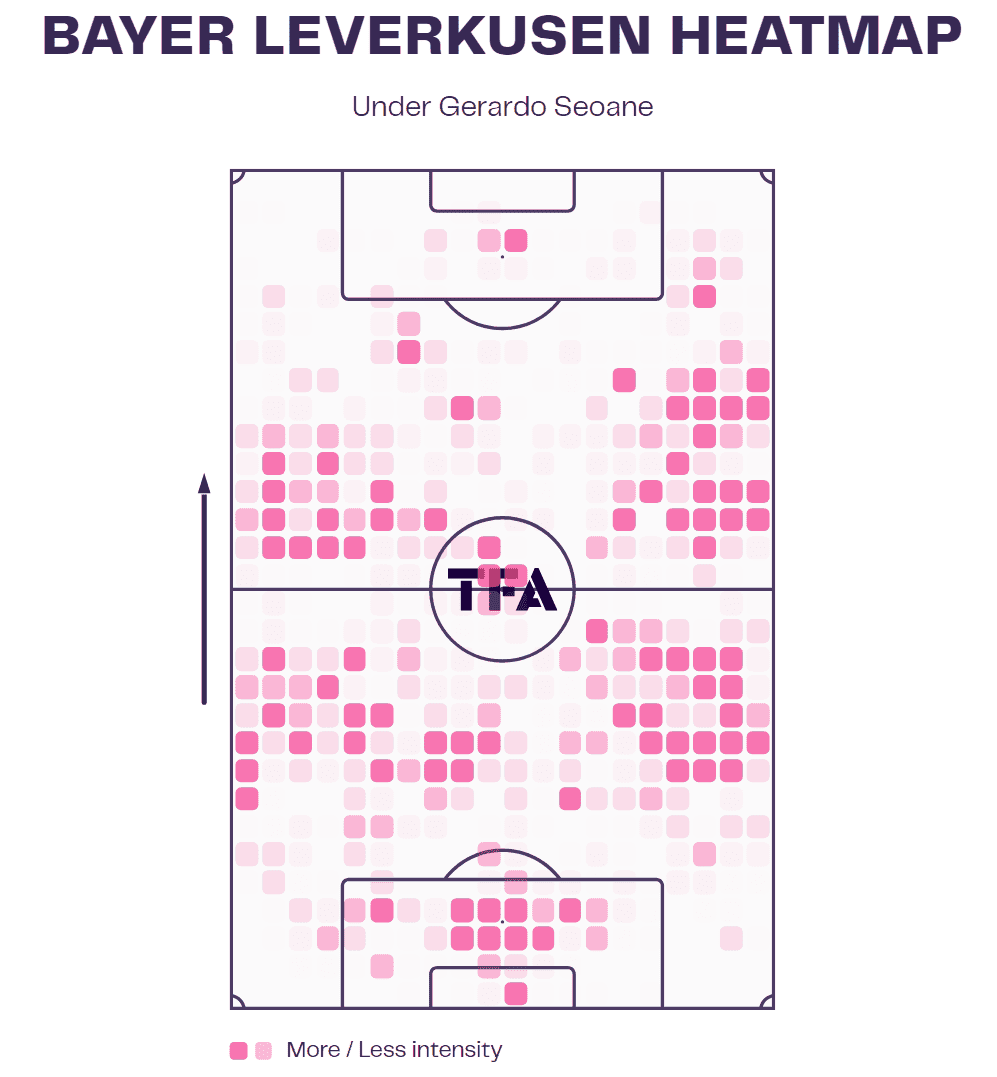
While in possession one of the most recurrent Seoane team dynamics are related to the positional articulation between the winger and the fullback. The more unpredictable you are in possession the more problems you place into the opposition and positioning is the same thing.
Initially, it is also important to note that Gerardo adapts to the player that he has available and in Bayer Leverkusen’s case, apart from Jeremie Frimpong, he hadn’t got that many offensive fullbacks.
With that said he promoted a build-up supported by the fullbacks lower on the pitch in an initial phase and with the wingers having the possibility to explore both inside and outside. Such positioning, as it’s visible below, exposes the team less and can have a significant impact on Borussia M’gladbach who had suffered some goals in counterattacks as we saw previously.
We can see, for instance, Jonas Hofmann taking advantage of such positional freedom through his intelligence and technique at Mönchengladbach next season.
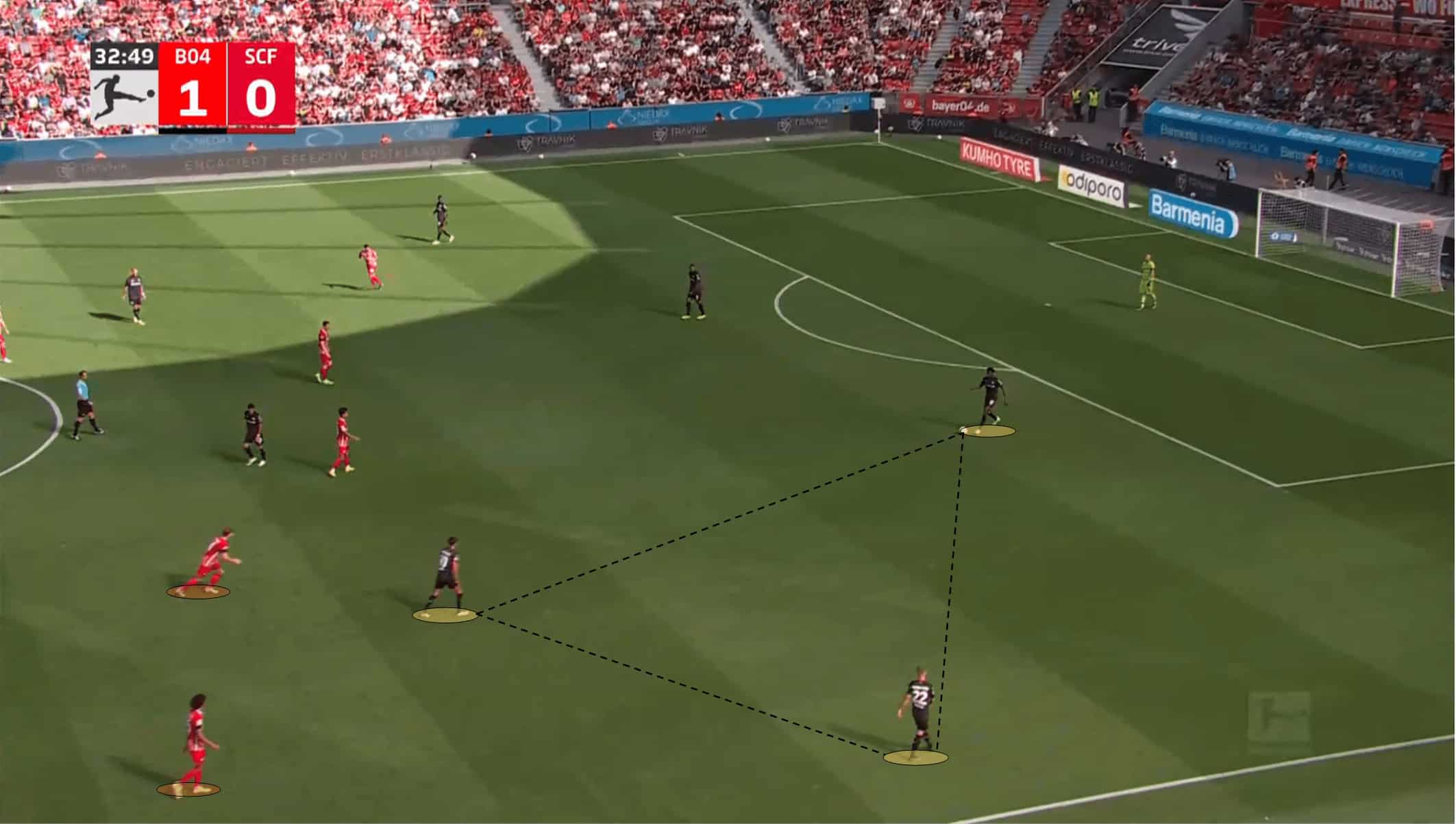
More advanced on the pitch, the Swiss coach seems to instruct his players that the winger and fullback should be in different sectors. In other words, if the winger is inside, the fullback has space to use width and attack the depth, or vice versa.
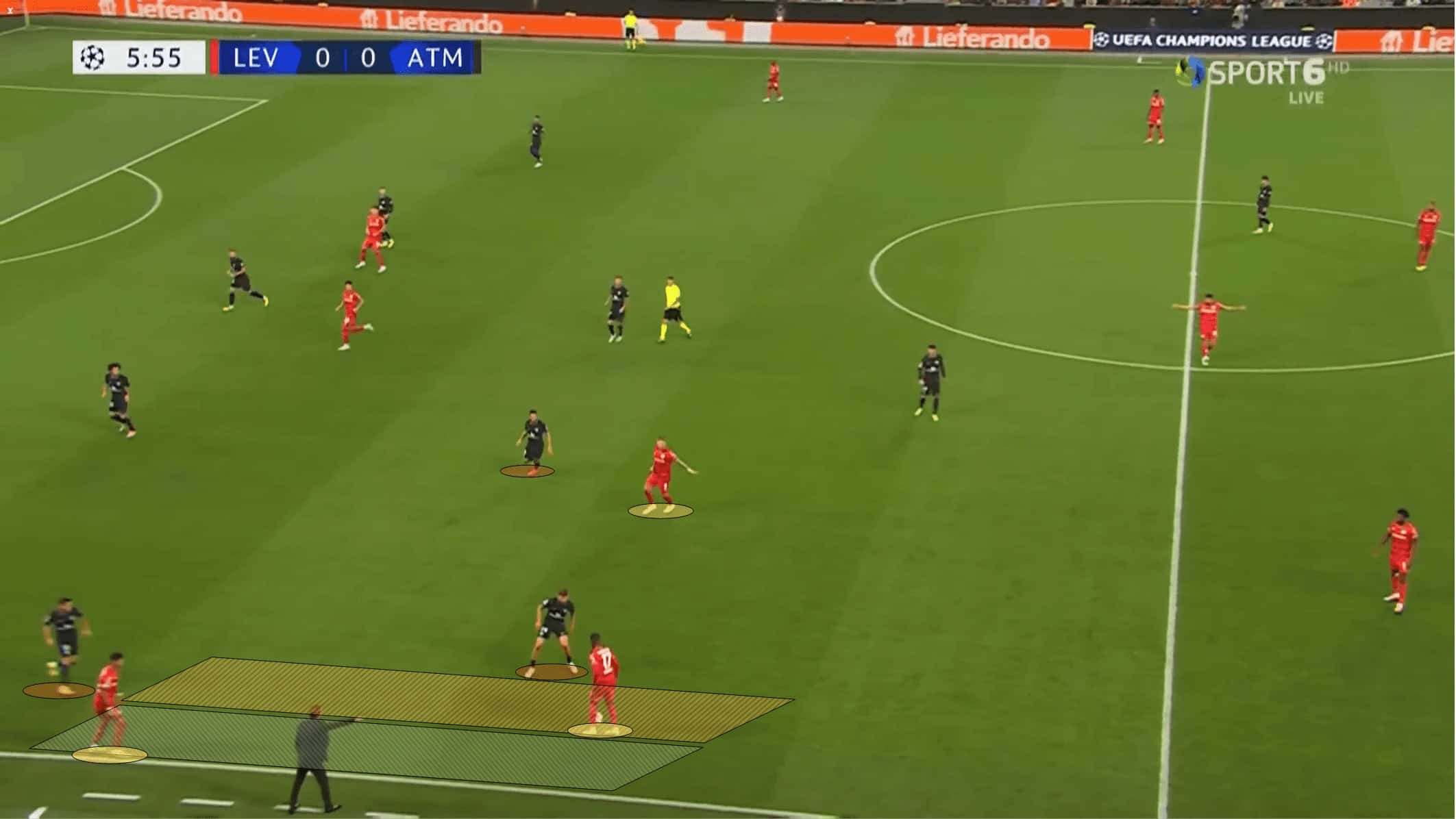
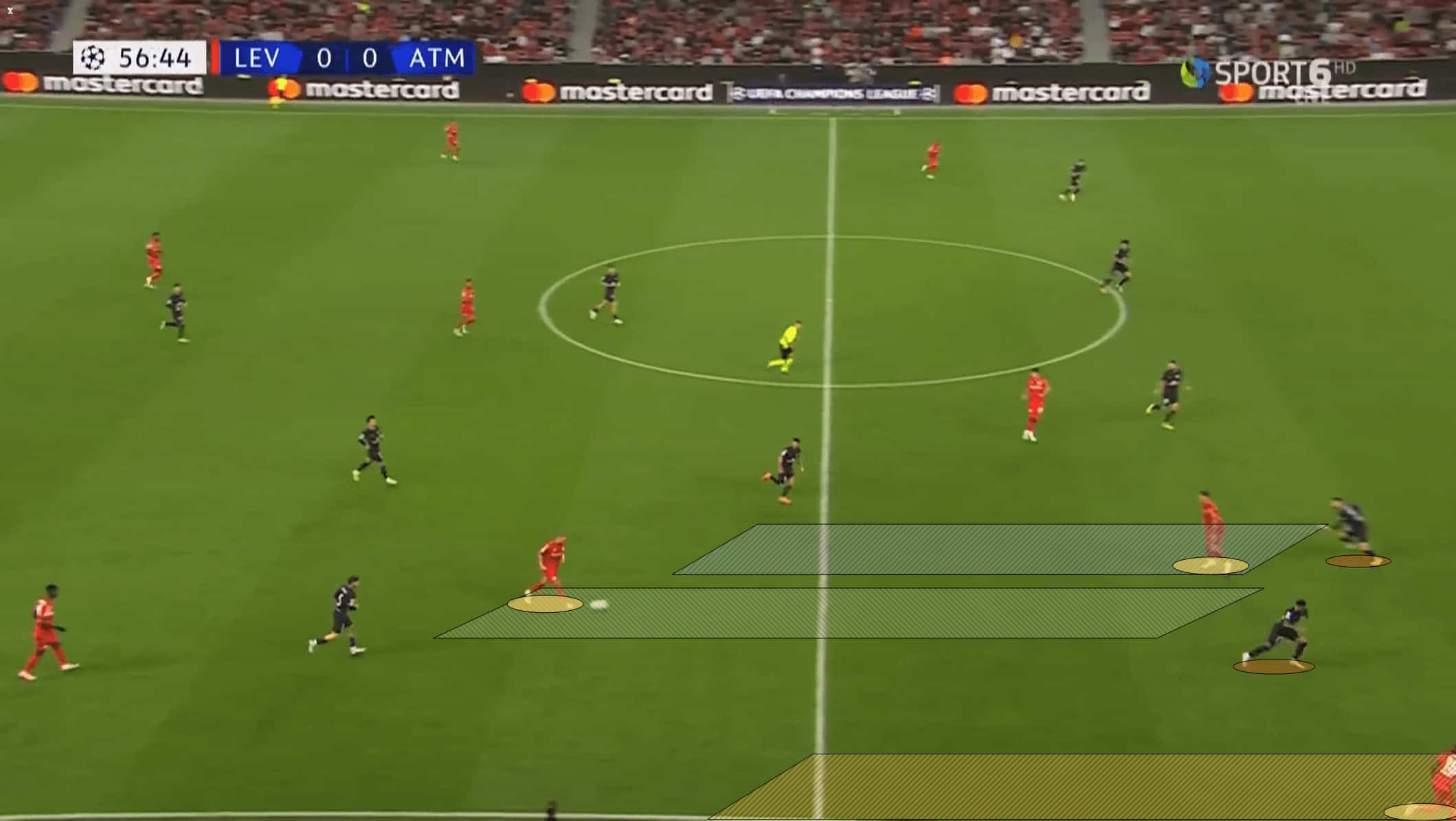
Under Gerardo Seoane it is expected to be also coordination between the players occupying more advanced zones of the pitch. Again as we referred to in some other articles, coordinated movements between players from different positions create space to play, because it misguides the opposition’s pressing plan.
To exemplify, we have a situation where initially the winger placed inside attracts the opposition and consequently creates space in their back for the offensive midfielder and striker to attack.
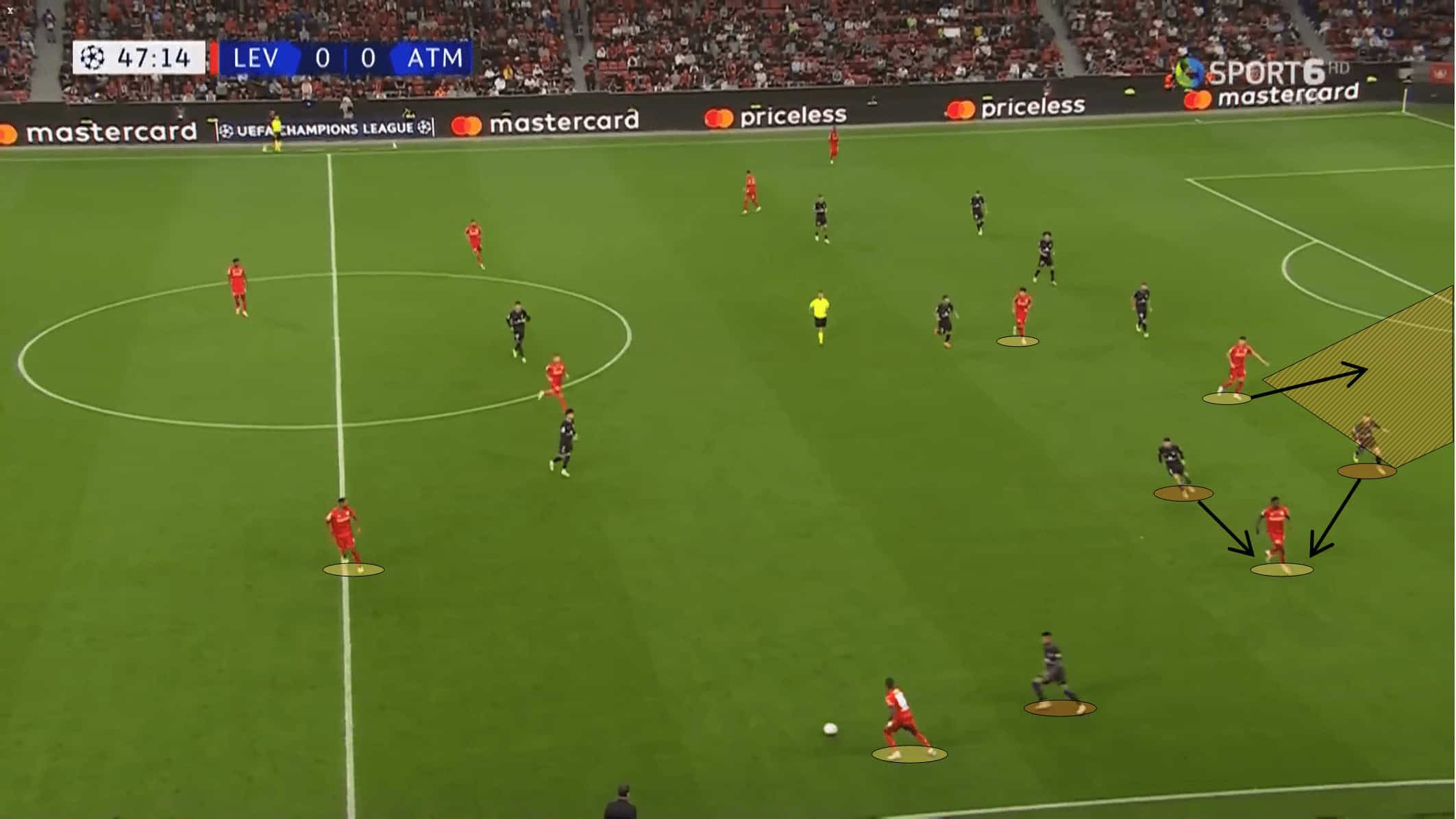
Another of Seoane’s game dynamics is a three-men build-up with the defensive midfielder, who drops on the pitch as an alternative for the team’s build-up.
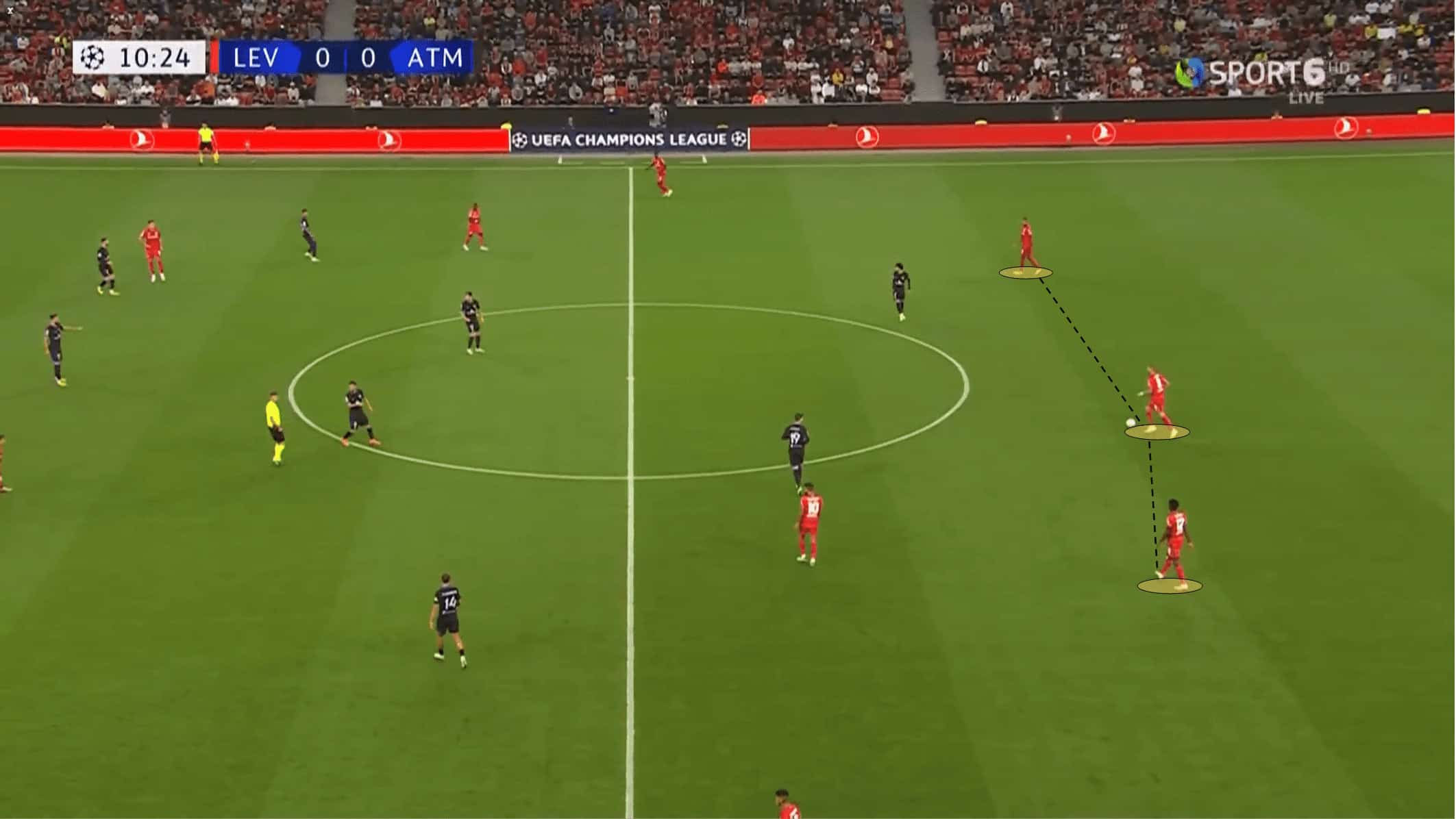
Last but not least, a defensive aspect that we found very effective in Seoane’s teams is the constant shortening of the space between the lines by the centre-backs. In contrast to Farke’s Borussia M’gladbach, who showed to be softer in this approach, teams under the Swiss manager close this gap, obstructing the opposition’s interior game.
This, and other defensive details, when adopted by the German side will surely have higher odds to increase their defensive cohesion and efficiency during the next season.
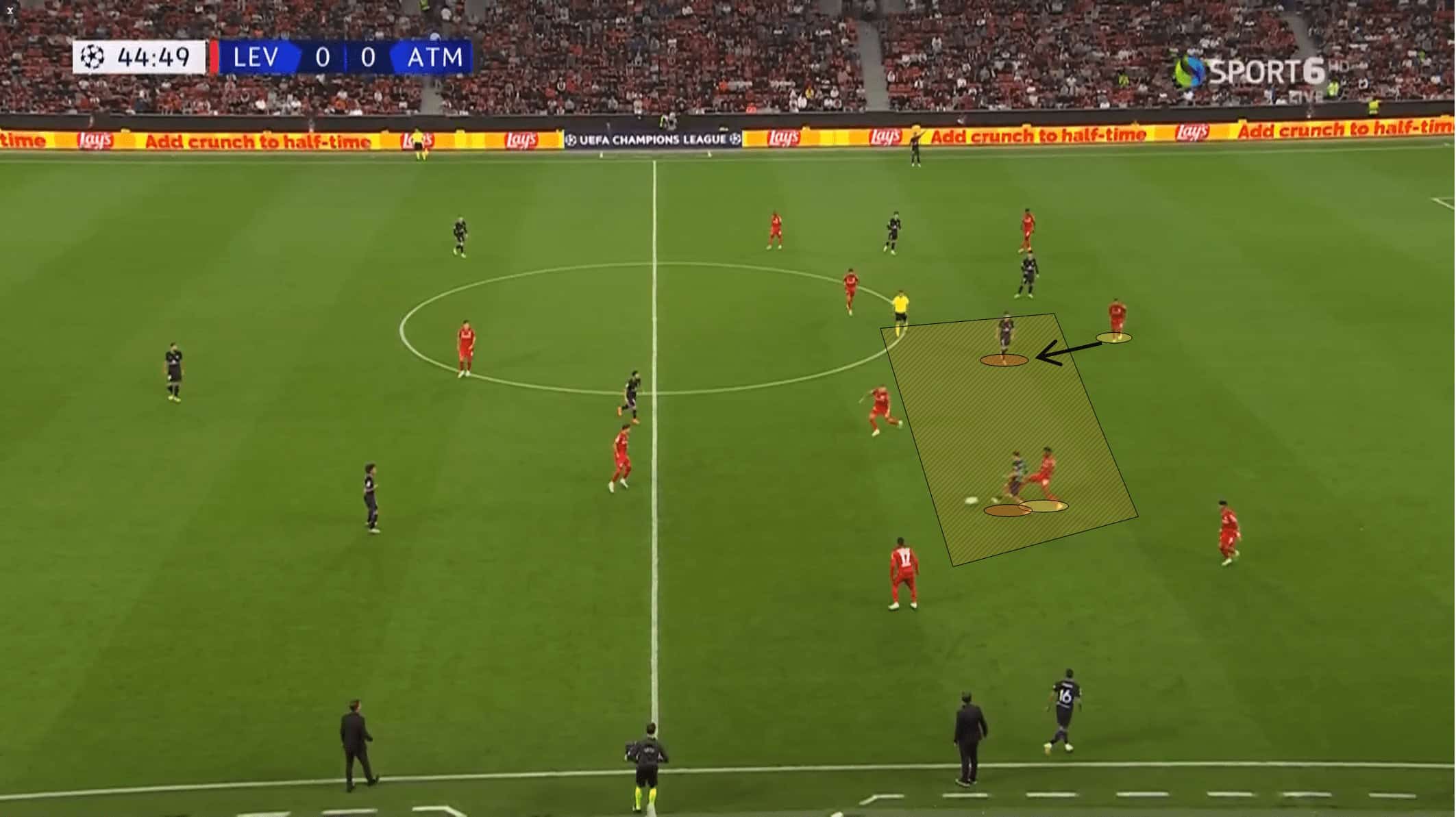
Recruitment
As we earlier referred, the departure of Marcus Thuram, Lars Stindl, Yann Sommer and Ramy Bensebaïni created a big gap inside the club’s squad. As a matter of fact, according to Transfermarkt, such a gap is quantified in almost 60 million euros, and assuming that M’gladbach wants to reach the European stands, it will need severe investment from the club in the summer.
To make Borussia Mönchengladbach a competitive team at least in the top seven, they have to bring in reinforcements for each member of the defensive line, including the goalkeeper. Besides that, to compensate for the departure of the club figure Lars Stindl, a decisive player who makes the difference in the last third is required.
Finally, and maybe the most urgent position to recruit: the striker. With 16 goals this season, Marcus Thuram was the top goal scorer in domestic competitions for the German side, and as it goes, it is very important to sign a player capable of filling the void left by him.
Conclusion
In this piece, we tried to cover what were the main reasons for Borussia Mönchengladbach’s less successful season under the German coach Daniel Farke. Problems related to the team’s intensity out-possession and even concerns related to the team’s exposure to counterattacks during the build-up process were at the forefront.
Then. we did an analysis of the recent-hired head coach Gerardo Seoane and try to understand where he can add value to the German side. As we described, mobility and coordination between full-backs, wingers and forwards was and probably will be a constant in Mönchengladbach’s new game model for next season.
Besides that, the Swiss coach can also improve M’gladbach’s defensive solidity by reducing the space and obstructing the opposition’s game between the lines.
Lastly, we also made reference to the need to make an investment in the summer in order to bring in players with the same or even more quality than the ones who left. Seoane can implement positive nuances to Mönchengladbach’s game. However, if the players who will be signed do not have the necessary quality to execute his possession plan, it will be difficult to reach the Bundesliga top seven.






Comments